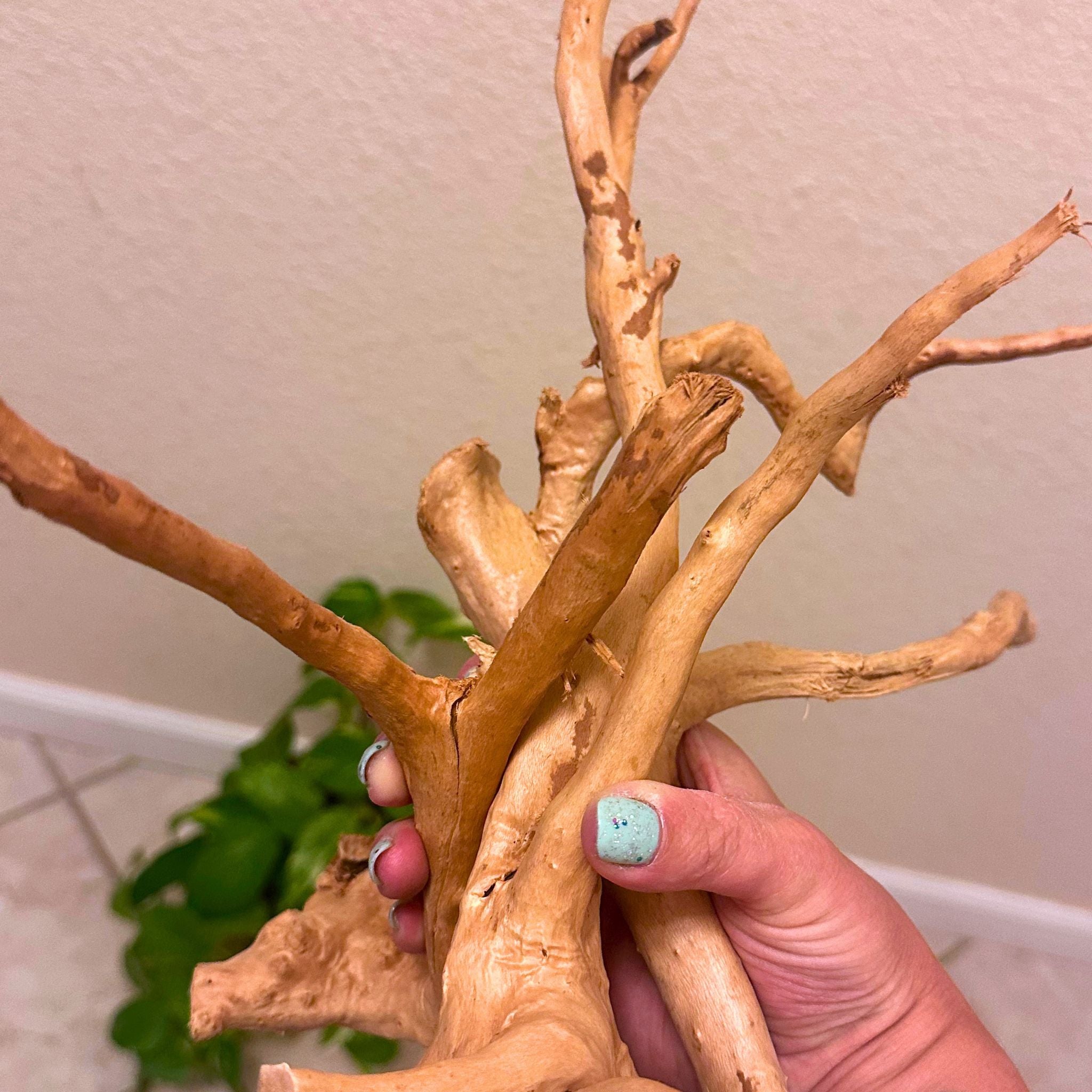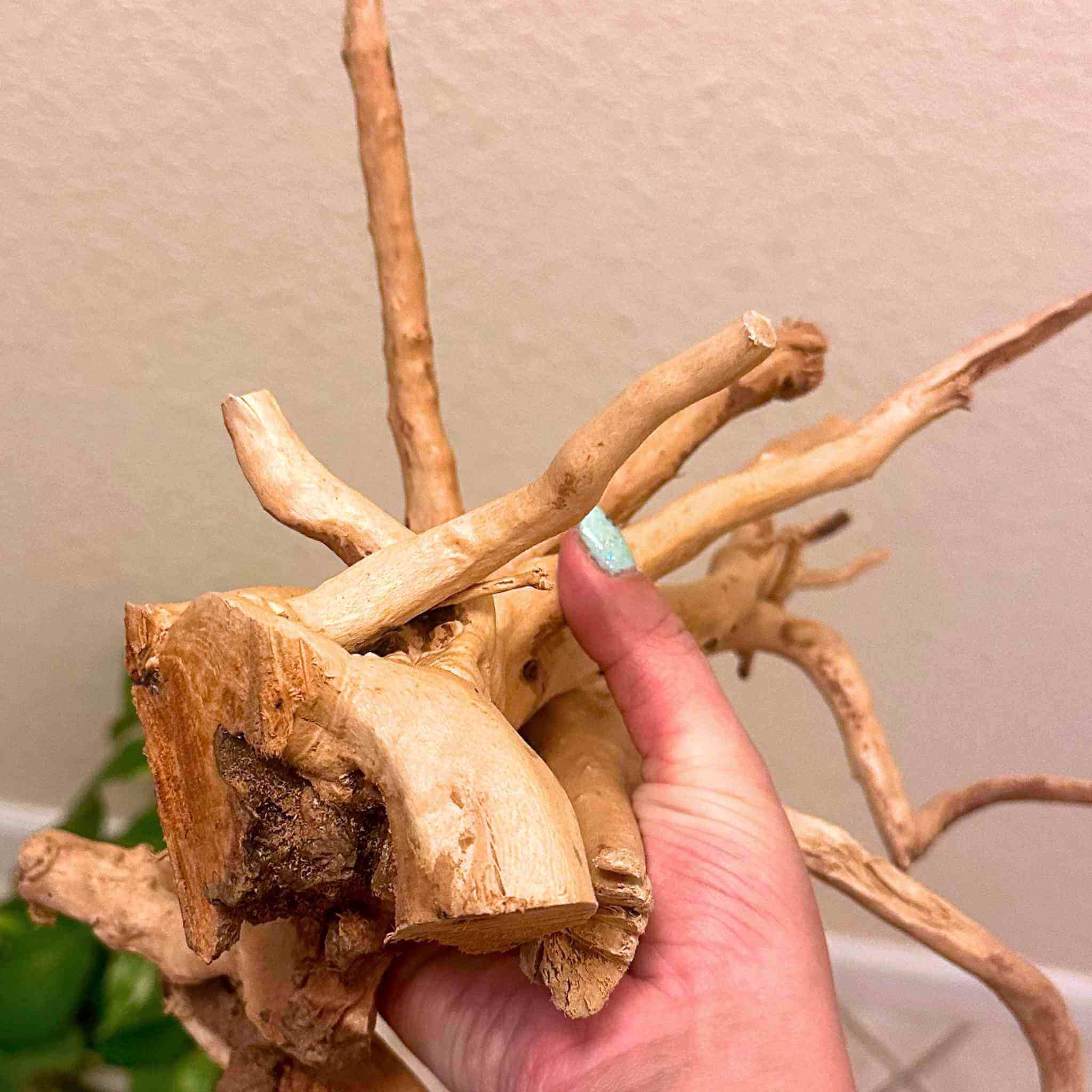






Spiderwood Driftwood Branch
Spiderwood is a pale, slender softwood that twists and turns into dynamic structures. It's perfect for adding depth and character to a lush terrarium scene. Each piece is uniquely chaotic in shape, making it a fantastic centerpiece or hardscape pairing.
- Medium are 8-12" twig structures.
- Large are above 10" root + twig structures.

Key Benefits
Spiderwood hardscape - Dynamic & organic
Whether it's a centerpiece or an accent piece, spiderwood can fill many roles in a terrarium (and crafts projects like moss walls).
Spiderwood's wild shapes and structures add so much personality. Add to the back to frame the scene, then style them vertically to visually "lift" it.
Unlike hardwoods, spiderwood is lightweight and easy to work with. It won't weigh down your terrarium, and can be easily placed in dynamic ways.
FAQ
Have any spider wood questions? We're here to help.
Check out the most common questions our customers ask. Have questions about something else? See our dedicated FAQ page!
What is spider wood made of?
Spider wood is not technically a wood, it's actually the dried root system of shrubs from the Rhododendron genus. It's most commonly Azalea root.
How can I best use spiderwood in terrariums?
Spiderwood looks great when the gnarling branches are facing upwards, filling the upper levels of the terrarium. It pairs well with terrarum rocks too, contrasting the broad shapes and density.
👉 See our spider wood hardscape guide for more ideas and tips.
How tough is spiderwood?
Spiderwood isn't a hardwood, so it's not as sturdy as the likes of manzanita wood. But it's pretty robust for its size and weight.
You can break off thin twigs with reasonable force, but thicker branches and root balls can be difficult to break/separate.
How long does spiderwood last in a humid terrarium?
Being a softwood, it's more prone to getting a little moldy (we sometimes see a light fuzz on it in the first few weeks). It often disappears on its own, but springtails really help here too.
